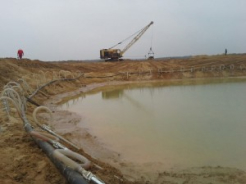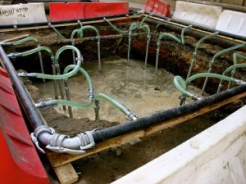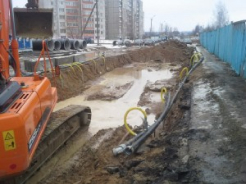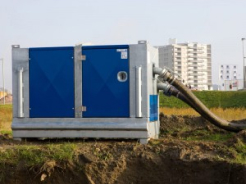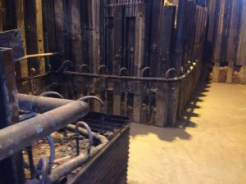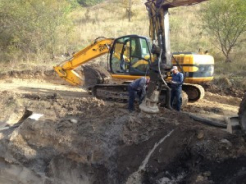Eastern Ukraine sales department : +38 (066)-159-42-34
Western Ukraine sales department: +38 (067)-612-60-55
Western Ukraine sales department: +38 (067)-612-60-55
Dewatering
Digging pits and trenches, the bottom level of which is located below the groundwater level, leads to necessity of construction dewatering. Dewatering works are aimed at either lowering the natural level of groundwater, or diverting water entering the pit in various ways, ensuring protection of pits from flooding. Dewatering can be carried out using open drainage or deep dewatering during the entire time of earthworks, building foundations, etc. The method of dewatering is chosen depending on the type and amount of groundwater, the characteristics of stratification and soil properties, the depth, size and shape of the pit, other features such as crampedness, buildings and structures location in close proximity, underground utilities, etc.) and the size of the construction site.
-
Open drain is the simplest way to draw water. It is used in shallow pits. Open drainage is carried out directly from the pit into a sump by pumps. As the pit is developed, the sump is gradually transferred and deepened. Open drainage has significant disadvantages. Water entering through the walls of the pit carries soil particles out of them, and water rushing from below to the bottom of the pit inevitably loosens the soil and reduces its bearing capacity. In addition, dirt (liquefied soil) is constantly stored in the pit.
To perform open drainage works, we use a set of electric and hydraulic slurry pumps with a capacity of up to 500 cubic meters per hour. -
Drainage or deep drainage. With a large amount of groundwater, cramped conditions, etc. deep drainage is used, which is carried out with the help of wellpoints drilled in the ground around the pit.To perform these works, we use a mobile set of equipment - BBA Pumps BV (Netherlands) with a diesel or electric drive.

